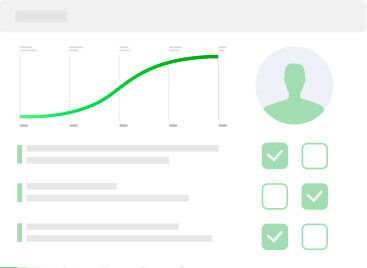Markus Winters
1
reviews
0
helpful votes
0
disagrees
What Causes Pulmonary Hypertension in the Lungs?
When I first heard the term "pulmonary hypertension," I was overwhelmed by the complexity of it all. This wasn’t a condition I was familiar with, and the sheer scale of its implications was daunting. The diagnosis came after a series of routine check-ups and tests, but understanding what led to this point required a deep dive into what causes pulmonary hypertension in the lungs.
My journey began with an unremarkable set of symptoms—shortness of breath and occasional chest discomfort. Initially, I dismissed these as minor inconveniences. It wasn’t until my symptoms began to worsen that I sought medical advice. The term "pulmonary hypertension" sounded alarm bells, but I wasn’t quite sure what it entailed. My doctor explained that pulmonary hypertension involves elevated blood pressure within the arteries of the lungs, a condition that can strain the heart and affect overall health.
The underlying causes of pulmonary hypertension can be multifaceted. In my case, the root was linked to chronic lung disease, particularly Chronic Obstructive Pulmonary Disease (COPD). COPD is a progressive lung disease that makes breathing difficult and leads to long-term damage in the lungs. The connection between COPD and pulmonary hypertension is significant; as the lungs become damaged, the blood vessels in the lungs can become narrowed or obstructed, leading to increased blood pressure.
I was also surprised to learn that pulmonary hypertension could be exacerbated by other factors, such as sleep apnea or even lung cancer. These conditions can either directly damage the lungs or indirectly cause changes that lead to elevated pressure in the pulmonary arteries. The interconnection between these diseases was eye-opening and highlighted the importance of a comprehensive approach to diagnosis and treatment.
The diagnostic process for pulmonary hypertension was thorough and somewhat daunting. My doctor recommended a series of tests to confirm the diagnosis and understand the extent of the condition. One of the first tests was a chest X-ray, which provided a snapshot of my lung health and highlighted any potential abnormalities. However, an X-ray alone wasn’t enough. To get a clearer picture, I underwent additional imaging studies, including a nuclear lung scan and right heart catheterization.
The right heart catheterization was particularly intimidating. This procedure involves inserting a catheter through a vein in the neck or groin and threading it to the heart to measure the pressure in the pulmonary arteries directly. It was a complex process, but essential for an accurate diagnosis. This test, along with lung function tests and detailed blood work, allowed my doctors to determine the severity of my pulmonary hypertension and tailor the treatment plan accordingly.
Understanding the severity of pulmonary hypertension led to discussions about the treatment options available. I quickly learned that managing this condition involves a multi-faceted approach. The treatment plan often includes medications to help dilate the blood vessels and lower blood pressure in the lungs. While discussing the specifics of these medications was essential, what was equally important was adopting lifestyle changes. Regular exercise, a healthy diet, and avoiding activities that could exacerbate symptoms became crucial components of my treatment plan.
Oxygen therapy was another significant aspect of my treatment. By increasing the oxygen levels in my blood, it helped reduce the strain on my heart and lungs. This therapy, while initially cumbersome, became a vital tool in managing my condition. I also learned that ongoing monitoring and adjustments to the treatment plan were necessary. Pulmonary hypertension is a chronic condition, and maintaining an open line of communication with my healthcare team was crucial for effective management.
One of the most valuable lessons from my experience was understanding the importance of early intervention and proactive management. Pulmonary hypertension can be a daunting diagnosis, but with the right treatment plan and support, many people are able to manage their symptoms and maintain a good quality of life. For those facing this condition, it’s essential to work closely with healthcare providers, adhere to prescribed treatments, and make necessary lifestyle changes.
My journey with pulmonary hypertension was challenging, but it also provided a profound understanding of the condition and its management. I hope that sharing my story can help others who are navigating similar challenges. Remember, while pulmonary hypertension is a serious and chronic condition, with proper care and treatment, it is possible to live a fulfilling life.
Enig 43 Uenig 13 a year ago ![]()
Report reason
Your report successfully sent
Share this review
Share this review to draw more attention to opinion and get the brand's feedback faster
facebook
Twitter

Del
Rapporter
Sign In
Sign In
Sign In to leave comments faster, get updates for reviews or answers, join for our weekly newsletter.


8.2
B
Nr. 7 i kategorien SMOKING CESSATION
Lung hypertension
Skriv en anmeldelse
ask.direct
Velg kommunikasjonskanalen du ønsker å bruke
Ask.Direct kobler deg med noen av mange kunder som er klare til å hjelpe deg umiddelbart
Få svar fra ekte kunder i løpet av 15-30 sekunder
Report a brand problem
Produktet Lung hypertension tilhører
Er du eier av selskapet Lung hypertension?
Kommuniser med kundene og forstå deres behov ved hjelp av PLUR-verktøyene
Øk tilliten til merkevaren din og få nye kunder
20 000
Ask.Direct-forespørsel
1 500 000
Sidevisninger
13 000
Fylte kundeopplysninger
7 000
Anmeldelser per måned
15 000
Likes på anmeldelser per måned

10 000
Fullførte undersøkelser

Øk publikumet ditt, få flere aktive følgere
Tiltrekk publikum med ekspertenes meninger
Vi hjelper siden din til toppen av søkemotoren angående merkevarens omdømme - gratis!
Få nye kunder til dine sosiale medier eller kanaler!
Følg statistikkene til besøk gjennom lenken til profilen og visning av innhold













